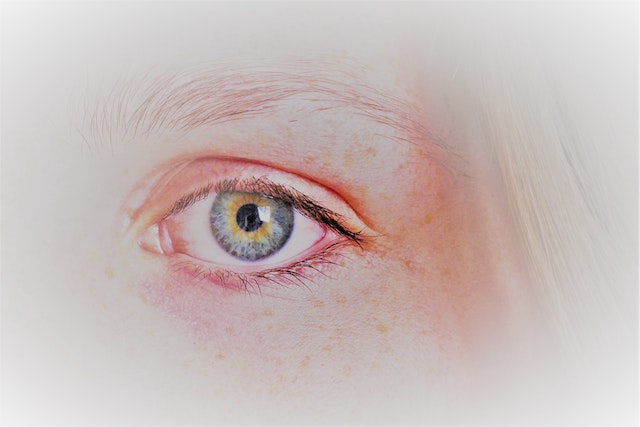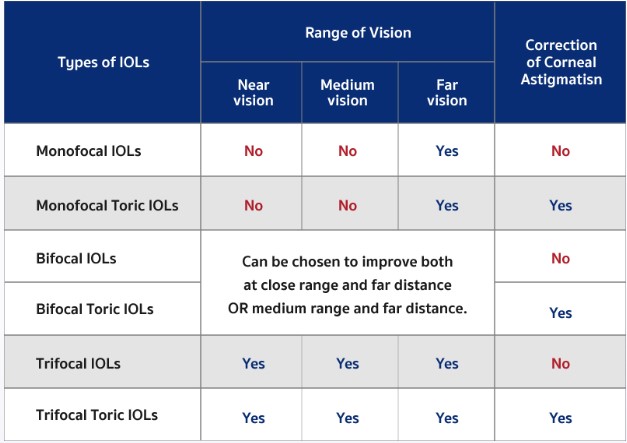Cataracts are a prevalent eye issue that can greatly affect vision. Cataract surgery is an incredibly efficient procedure capable of reinstating clear vision. However, the decision to undergo cataract surgery often comes with questions about waiting times, healthcare options, and success rates. These questions are vital to consider, as they can influence the choice between public healthcare systems like the NHS or private options, ensuring individuals make informed decisions about their vision and overall eye health. Moreover, prospective patients need to grasp the range of available cataract surgery procedures, assess their suitability, and consider influencing factors. Often the cost of cataract surgery in places like the UK and USA are expensive and patients look at other countries to get their cataract surgery.
In this article, we will explore the various types of procedures available for cataract surgery, with a focus on the NHS waiting list for cataract surgery, comparing it to private options, and understanding the high success rates associated with this surgery.
Understanding Cataract Surgery: Types, NHS Waiting Times, and Success Rates
Types of Cataract Surgery Procedures
Cataract surgery has evolved significantly over the years, with various techniques and technologies available to address different patient needs. When contemplating cataract surgery, it’s crucial to gain insight into the available surgical techniques. Here are the main types:
1. Phacoemulsification
Phacoemulsification employs ultrasound to fragment the cloudy lens (cataract) into tiny pieces, which are subsequently extracted through a small incision. This technique is celebrated for its precision and swift recovery, making it a favored option for numerous
2. Manual Small-Incision
While phacoemulsification is the standard, MSICS is an alternative technique. It involves making a larger incision compared to phaco, through which the cataract is removed manually. MSICS may be preferred in cases of very dense cataracts or when phacoemulsification is not suitable due to certain factors
3. Laser-Guided Cataract Surgery.:
Laser technology has made its way into cataract surgery in recent years. It utilizes a femtosecond laser to make precise incisions and delicately soften the cataract for precise removal. This technique can enhance the accuracy of the procedure, especially in complex cases.
4. Intraocular Lens (IOL) Implantation:
Another crucial aspect of cataract surgery is the choice of intraocular lens (IOL). Various types of IOLs are accessible, and the selection hinges on the patient’s visual requirements and preferences. The primary categories of IOLs include:
· Single-focus IOLs.:
These IOLs provide clear vision at one specific distance, usually for distance vision, and patients might still find it necessary to wear glasses for near or intermediate vision.
· Multifocal Intraocular Lenses:
Multifocal IOLs enable clear vision at various distances, including near, intermediate, and distant.
· IOLs for Astigmatism:
These intraocular lenses are specially designed to address both cataracts and astigmatism. They can significantly improve the quality of vision for patients with astigmatism. Toric IOLs are considered the most predictable way of correcting corneal astigmatism.
5. Premium Lens Options:
In private cataract surgery, patients often have access to premium lens options that may not be available through the NHS. These high-end lenses may encompass advanced multifocal or accommodating IOLs, offering an extended range of vision and diminishing the necessity for glasses or contact lenses.
It’s crucial for individuals considering cataract surgery to discuss these various procedures and lens options with their healthcare providers. Selecting the appropriate procedure should be customized to match the patient’s requirements, visual objectives, and any underlying eye ailments. Additionally, whether opting for NHS or private care, patients should have a clear understanding of the procedure that will be performed and the expected outcomes to make an informed decision about their eye health.
Ultimately, the “best” procedure is the one that meets your visual needs, addresses your cataract condition effectively, and aligns with your overall health and lifestyle. The choice should be reached through a collaborative discussion with your healthcare provider to guarantee the optimal outcome for your eye health.
NHS Wait Times and Cataract Surgery Costs
One of the primary concerns for individuals considering cataract surgery in the United Kingdom is the waiting time within the National Health Service (NHS). Patients may face a wait of several weeks to a few months. The NHS provides cataract surgery to eligible patients, but the waiting list can vary depending on several factors:
1. The severity of the Condition:
The urgency of cataract surgery depends on the severity of the cataracts and how they affect a person’s daily life. Those with more advanced cataracts may receive priority and have shorter waiting times.
2. Location:
Waiting times can vary by region, with some areas experiencing longer waitlists than others. Urban centers may have shorter waiting lists compared to rural areas.
3. NHS Resources:
The availability of surgical facilities and healthcare professionals can impact waiting times. Areas with limited resources may experience longer waiting times.
4. Individual Health Status:
Patients with specific medical conditions or complications may need additional assessments or preparation before surgery, potentially extending their waiting time.
5. Choice of Hospital:
Some NHS patients may have the option to choose a specific hospital or surgical center for their cataract surgery, which can influence waiting times.
Patients need to consult with their local NHS eye care services to get accurate information about waiting times in their area. While the NHS aims to provide timely care, waiting times can vary, and some patients may find the wait challenging due to their vision impairment.
Cataract Surgery Cost and NHS Waiting Times
The waiting times for cataract surgery in the NHS can range from a few weeks to several months. To manage these waiting times and ensure that patients receive treatment on time, the NHS has implemented several strategies:
1. Cataract Referral:
Patients with suspected cataracts are typically referred to an ophthalmologist by their optometrist or general practitioner. The urgency of the referral is determined by the severity of the cataracts and their effect on the patient’s vision.
2. Triage and Assessment:
Upon referral, patients are assessed by an ophthalmologist who determines the appropriate timing for surgery. This assessment takes into account factors like visual impairment and the patient’s overall health.
3. Priority Cases:
Patients with severe cataracts or significant visual impairment are often prioritized and may have shorter waiting times. The NHS aims to perform surgery on these cases within a few weeks.
4. Waiting List Management:
NHS trusts actively manage waiting lists to ensure that patients are treated as efficiently as possible. This may involve reallocating resources to areas with longer waitlists.
While waiting times in the NHS can vary, the goal is to provide cataract surgery to all eligible patients on time. However, some individuals may opt for private cataract surgery to bypass the waiting list altogether.
Is Private Cataract Surgery Better than NHS?
Private cataract surgery offers an alternative to the NHS for those who seek quicker access to treatment and additional benefits. Here are some factors to consider when comparing private cataract surgery to the NHS:
1. Waiting Times:
Private cataract surgery typically involves shorter waiting times compared to the NHS. Patients can schedule their surgery at a time that suits them, often within a few weeks of their consultation.
2. Selecting Your Surgeon and Medical Facility:
In private healthcare, patients frequently enjoy the privilege of selecting their surgeon and the hospital where the procedure will occur, enabling a more customized level of care.
3. Premium Lens Options:
Private cataract surgery often offers a range of premium lens options that may not be available in NHS procedures. These advanced lenses have the potential to lessen the necessity for glasses post-surgery.
4. Enhanced Aftercare:
Private clinics may offer more extensive aftercare services, including additional post-operative appointments and support.
5. Cataract Surgery Cost:
Private cataract surgery is typically not covered by the NHS and involves out-of-pocket expenses or private insurance. When choosing between NHS and private options, patients need to consider their financial circumstances and assess their insurance coverage. It’s worth emphasizing that both NHS and private cataract surgeries boast impressive success rates, and the decision hinges on individual preferences and circumstances.
Here are the prices in general for unilateral cataract surgery costs and they vary by country and type of practice.
High Success Rates
Cataract surgery is considered one of the most successful and safe surgical procedures in modern medicine. Here are some key factors contributing to its high success rates:
1. Experienced Surgeons:
Cataract surgery is performed by skilled and experienced ophthalmic surgeons who specialize in this field. Their expertise ensures precision during the procedure. In our team we have very experienced cataract surgery doctors which include Dr. Abdulla Naqi.
Dr. Abdulla Naqi graduated from the Royal College of Surgeons in Ireland, receiving his bachelor’s degree in surgery and medicine in 1997. Then in 2007, Dr. Naqi completed his Ophthalmology residency in Canada at McGill University.
Dr. Naqi became Canadian Board certified and obtained the Diploma of Royal College of Surgeons in Ophthalmology in 2007. Between 2007 and 2009, he joined the faculty of Ophthalmology at the University of Toronto to complete his fellowship in Glaucoma and advanced anterior segment surgery under the preceptorship of the world-renowned Dr. Ike Ahmed.
Dr. Naqi returned to the United Arab Emirates and became the head of Ophthalmology at the Dubai Health Authority. The North American Lasik and Eye Surgery Center was founded by Dr. Naqi in 2013 and he is currently engaged in private practice.
2. Advanced Technology:
Advances in surgical equipment and techniques, including the use of lasers and modern phacoemulsification technology, have improved surgical outcomes.
3. Intraocular Lens (IOL) Implants:
The placement of intraocular lenses during cataract surgery allows for improved vision correction. Advanced IOLs, known as premium IOLs, can offer multifocal or toric correction, thereby diminishing the reliance on glasses or lenses.
4. Swift Healing Period:
Cataract surgery typically entails a brief recovery period, with the majority of patients enjoying improved vision within a matter of days.
5. Minimal Incidence of Complications:
Although every surgery carries inherent risks when conducted by proficient surgeons, cataract surgery exhibits a minimal rate of complications. Cataract surgery boasts a success rate of over 95%, making it one of the most reliable and effective surgical procedures in modern medicine
Conclusion
Cataracts are a common age-related condition, and the decision to undergo surgery often depends on the impact of cataracts on daily life. Factors such as difficulty driving, reading, or recognizing faces can prompt patients to seek surgical intervention. Additionally, the NHS continuously works to improve its cataract surgery services, aiming to reduce waiting times and ensure accessibility for all eligible patients. Ultimately, whether choosing the NHS or private care, cataract surgery is a proven and trusted method for restoring clear vision and enhancing overall well-being, allowing individuals to enjoy a more vibrant and fulfilling life. For better vision, consult a healthcare provider for the right course of action.







